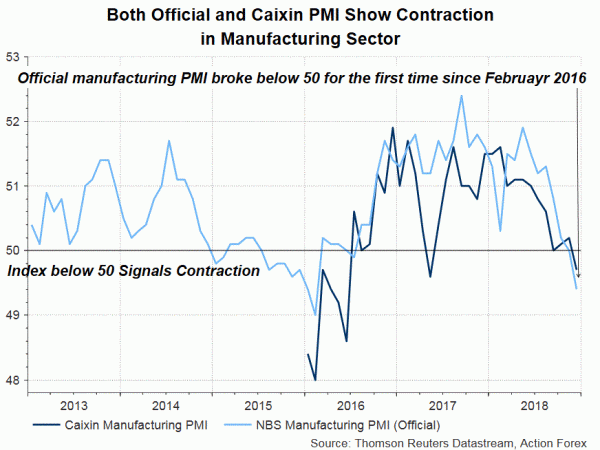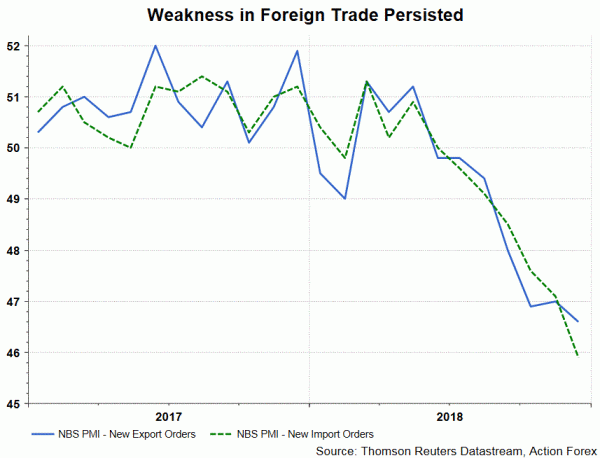The latest PMI data added further evidence that China’s economy is in bad shape. Trade war with the US has not only weakened trade, but also domestic demand. The job market has also deteriorated, suggesting further stimulus is needed to be in place as soon as possible. We expect the central bank to accelerate monetary easing. While further reduction in required reserve ratio is widely expected, we believe PBOC could also reduce the policy rate to support the economy. The government’s fiscal policy would be increasingly accommodative, in the form of increasing spending on infrastructure and cutting taxes.
Focusing on small- and medium- sized firms, Caixin’s manufacturing PMI dropped to 49.7 in December, the first time since May 2017 that the reading has been below 50. The sib-indices also performed poorly. For instance, the “new orders” sub-index also breached 50 for the first time since June 2016, reflecting “decreasing demand in the manufacturing sector”. New orders include both domestic and exports orders. Given the fact that the “new export orders” sub-index, while staying in the contractionary territory, recovered mildly in December, the weakness in “new orders” was driven by domestic demand. Other sub-indices hovered around the 50 level, suggesting the entire manufacturing environment is fragile. As Caixin noted in the accompanying statement, China’s manufacturing sector “faced weakening domestic demand and subdued external demand in December”. Strong incentive to “destock” and decline in the prices of industrial products could “further drag on production”. It is “looking increasingly likely that the Chinese economy may come under greater downward pressure”.
Released over the weekend, the official manufacturing PMI fell to 49.4, a 34-month low and the first time below 50 since June 2016, in December. Looking into details, the weakness was driven by significant decline in the trade-related sub-indices, as well as the production and employment sub- indices. Trade war with the US has caused the trade-related activities to deepen into contraction: The “new export orders” sub-index dropped -0.4 point to 46.6, while the “import” sub- index declined to 45.9 from November’s 47.1, the lowest since August 2012. The “new orders” sub- index fell to 49.7 in December, the lowest since February 2016. This showed weakness was seen in domestic demand. While staying in the expansionary territory, the “production” sub- index fell -1.1 points to 50.8 in December. We don’t feel surprise to see the index entering contractionary territory in 1Q19. The employment sub-index dropped to the lowest level in 30 months.
PBOC inevitably has to accelerate monetary easing, despite the danger of intentisying the debt problems. While further reduction in required reserve ratio is widely expected, we believe the central bank could also reduce the policy rate to support the economy. Expansionary monetary policy would cause renminbi to depreciate severely, something that the Chinese authority does not want to see. However, the officials might be more comfortable to do so in 2019, as the Fed slows down the pace of rate hike. Meanwhile, the government’s fiscal policy would be increasingly accommodative, in the form of increasing spending on infrastructure and cutting taxes, in order to defend the growth target of +6%.














